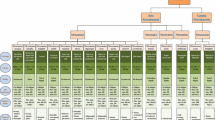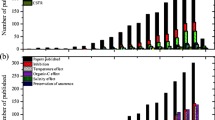Abstract
In order to assess the stability of nitrogen removal systems utilizing anaerobic ammonium oxidation (anammox), it is necessary to study the toxic effects of nitrite on these biochemical reactions. In this study, the effects of nitrite on anammox bacteria entrapped in gel carriers were investigated using batch and continuous feeding tests. The results showed that the nitrite concentration in a reactor must be less than 274-mg N/L in order to prevent a decrease in the anammox activity, which occurred when the gel carriers were soaked in nitrite solutions with concentrations greater than 274-mg N/L in a batch test. In a continuous feeding test, nitrite inhibition was not observed at low concentrations of nitrite. However, the anammox activity decreased to 10% when the nitrite concentration increased to 750-mg N/L over a 7-day period in the reactor. In addition, it was shown that the effects of nitrogen on the anammox reaction were reversible because the anammox activity completely recovered within 3 days when the influent nitrite concentration was decreased to less than 274-mg N/L.






Similar content being viewed by others
References
Dapena-Mora A, Fernadez I, Campos JL, Mosquera-Corral A, Mendez R, Jetten MSM (2007) Evaluation of activity and inhibition effects on Anammox process by batch tests based on the nitrogen gas production. Enzyme Microb Technol 40:859–865
Date Y, Isaka K, Ikuta H, Sumino T, Kaneko N, Yoshie S, Tsuneda S, Inamori Y (2009) Microbial diversity of anammox bacteria enriched from different types of seed sludge in an anaerobic continuous-feeding cultivation reactor. J Biosci Bioeng 107:281–286
Furukawa K, Rouse JD, Bhatti ZI, Imajo U, Nakamura K, Ishida H (2002) Characterization of microbial community in an anaerobic ammonium-oxidizing biofilm cultured on a nonwoven biomass carrier. J Biosci Bioeng 94:87–94
Hellinga C, Schellen AAJC, Mulder JW, Van Loosdrecht MCM, HeijnenWater JJ (1998) The Sharon process: an innovative method for nitrogen removal from ammonium-rich waste water. Sci Technol 37:135–142
Isaka K, Date Y, Sumino T, Tsuneda S (2007a) Ammonium removal performance of anaerobic ammonium-oxidizing bacteria immobilized in polyethylene glycol gel carrier. Appl Microbiol Biotechnol 76:1457–1495
Isaka K, Sumino T, Tsuneda S (2007b) High nitrogen removal performance at moderately low temperature utilizing anaerobic ammonium oxidation reactions. J Biosci Bioeng 103:486–490
Isaka K, Sumino T, Tsuneda S (2008) Novel nitritation process using heat-shocked nitrifying bacteria entrapped in gel carriers. Process Biochem 43:265–270
Mulder A, Van de Graaf AA, Robertson LA, Kuenen JG (1995) Anaerobic ammonium oxidation discovered in a denitrifying fluidized bed reactor. FEMS Microbiol Ecol 16:177–184
Strous M, Heijnen JJ, Kuenen JG, Jetten MSM (1998) The sequencing batch reactor as a powerful tool for the study of slowly growing anaerobic ammonium-oxidation. Microorganisms 50:589–596
Strous M, Fuerst JA, Kramer EHM, Logemann S, Muyzer G, Van de Pas-Schoonen KT, Webb R, Kuenen JG, Jetten MSM (1999a) Missing lithotroph identified as new planctomycete. Nature 400:446–449
Strous M, Heijnen JJ, Kuenen JG, Jetten MSM (1999b) Key physiology of anaerobic ammonium oxidation. Appl Environ Microbiol 65:3248–3250
Sumino T, Noto T, Ogasawara T, Hashimoto N, Suwa Y (1997) Nitrification of high concentration ammonium nitrogen using immobilized nitrifying bacteria WEFTEC 70th Annual Conference and Exposition pp 165−172
Van de Graaf AA, de Bruijn P, Robertson LA, Jetten MSM, Kuenen JG (1996) Autotrophic growth of anaerobic ammonium-oxidizing microorganisms in a fluidized bed reactor. Microbiology 142:2187–2196
Van der Star WRL, Abma ER, Blommers D, Mulder JW, Tokutomi T, Strous M, Picioreanu C, Van der Loosderecht MCM (2007) Startup of reactors for anoxic ammonium oxidation: experience from the first full-scale anammox reactor in Rotterdam. Water Res 41:4149–4163
Author information
Authors and Affiliations
Corresponding author
Rights and permissions
About this article
Cite this article
Kimura, Y., Isaka, K., Kazama, F. et al. Effects of nitrite inhibition on anaerobic ammonium oxidation. Appl Microbiol Biotechnol 86, 359–365 (2010). https://doi.org/10.1007/s00253-009-2359-z
Received:
Revised:
Accepted:
Published:
Issue Date:
DOI: https://doi.org/10.1007/s00253-009-2359-z




